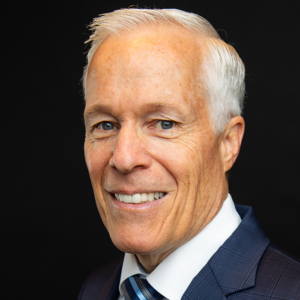Taxpayers May Claim Deductions for Vacation Homes

Taxpayers May Claim Deductions for Vacation Homes
Updated: 3/22/13
Taxpayers are allowed to claim deductions for their primary residence and one vacation or second home. In the case of the main residence, tax breaks are usually limited to mortgage interest and property tax deductions.
However, there are more deductions available when you own a second or vacation home. It just requires more effort to take advantage of them. You’ll find that when you devote some personal use time, along with some tax planning ahead of time, your vacation or second home can generate major tax savings.
Where second or vacation homes are concerned there are four tax categories. Mortgage interest and property tax payments for your second or vacation home are generally tax-deductible. But, unless your third home is a rental property, if does not qualify for the mortgage interest and property tax deductions.
In order to know which of the following four categories pertain to your second or vacation home, check out your personal use time.
No personal use time: Your second home will be regarded as rental property if it was rented or available for rental during all of 2012, with no personal use time. Even if you stayed in it for a couple of days, it’s still considered rental property.
Your rental income and deductible expenses must be reported on Schedule E of your income tax returns. The deduction for depreciation which allows for wear and tear also provides sizeable tax savings, either in this tax year or carried over to a future tax year.
In this category, you can deduct expenses for mortgage interest, property taxes, insurance, homeowner association fees, utility bills you paid, repairs, and depreciation. You can also make reasonable and necessary deductions for travel expenses to inspect (but not occupy) your rental property, even if it’s as far away as Puerto Rico or Hawaii.
To be eligible for the fore-mentioned deductions, you must do more than just hire a property manager to rent vacancies and collect the rent. You have to own at least 10 percent interest in the property, and it can not be managed by others in a ‘rental pool’. That means you would have to materially participate in managing your second home.
To “materially participate” means setting principles for tenants, establishing the rent and approving tenants. All that should be done by you even if the day-to-day management is done by someone else.
You can deduct up to $25,000 of second home tax loss from your other ordinary taxable income, only if you materially participate in managing your second home rental and your 2012 adjusted gross income is $100,000 or less.
If your gross income is between $100,000 and $150,000, then your second home tax deduction will slowly come to an end. Having an adjusted gross income of over $150,000 will make you ineligible for second home tax loss.
But don’t get discouraged just yet. There’s good news. Any tax exceeding the $25,000 limit that has not been used can be put away for use in a future tax year, or when the property is sold to compensate for taxable gains.
If you are a real estate professional and putting in a minimum of 750 hours per year on your real estate activities, then you’re eligible for unlimited deductions from your rental property from your ordinary income. One spouse can meet the requirements without even having a realty license, while the other spouse may be working full time elsewhere.
Less than 14 days of annual rental: This category entitles you to deduct your mortgage interest, property taxes and any uninsured casualty loss, like water damage, if you rent your second or vacation home less than 14 days of the year. Bear in mind that the rental income is entirely tax-free and does not have to be reported on your tax return.
Annual personal use time less than 15 days or 10 percent of the rental days: In this category there is no limit to tax loss deductions against your ordinary taxable income (except the $25,000 annual passive loss limit explained above). This tax category provides the greatest tax savings for filers who have a vacation or second home.
For example, let’s say you lived in your second home for 14 days in 2012 and then you rented it out for five months. Because your personal occupancy time was less than 15 days in that year, and less than 10 percent of the rental days, you can deduct up to $25,000 of expense losses that exceeds the rental income, including depreciation, from your adjusted gross income not above $100,000. According to Internal Revenue Code 183, in this category you must show a rental activity profit three of every five years.
Annual personal use time more than 14 days or 10 percent of the rental days: This category of heavy personal use and rental time, only applies if the property was rented for more than 14 days in 2012, and provides the lowest tax savings benefits.
Don’t forget that rental income and rental expenses must be accounted for on Schedule E. Nevertheless, any tax loss from rental expenses that exceed the rental income can not be deducted against ordinary income from other sources, such as your job. However, keep a good record of those unused tax losses as they can be used in future tax years.
The right way to deduct second or vacation home expenses in this personal use category is mortgage interest, property taxes, uninsured casualty losses, operating expenses that apply to the rental period such as insurance and repairs, and declining of the rental period.
When the rental income is exceeded by the mortgage interest, property taxes, and uninsured casualty loss expenses, you will have to itemize them on Schedule A of your tax return.
Even though second or vacation homes do not make great tax shelters, they can definitely minimize your tax liability while the property continually appreciates in value.
A tax benefit tip: If you are thinking of selling your second house or your vacation house, the best suggestion would be to move in so that it would then become your full-time main dwelling. This must be done for a 2-year period ending on the date of the sale. As a result, you can exclude up to $250,000 (up to $500,000 for a qualified married couple filing jointly) of the gain (other than gain allocated to periods of nonqualified use) on the sale. However, you must meet the ownership test (owned the home for at least 2 years), you meet the use test (lived in the home as your main home for the last 2 years) and during the 2 year period, you did not exclude gain from the sale of another home.
For more information see IRS Publication 523.
We hope you found this article about “Taxpayers May Claim Deductions for Vacation Homes” helpful. If you have questions or need expert tax or family office advice that’s refreshingly objective (we never sell investments), please contact us or visit our Family office page or our website at www.GROCO.com. Unfortunately, we no longer give advice to other tax professionals gratis.
To receive our free newsletter, contact us here.
Subscribe our YouTube Channel for more updates.

Alan Olsen, is the Host of the American Dreams Show and the Managing Partner of GROCO.com. GROCO is a premier family office and tax advisory firm located in the San Francisco Bay area serving clients all over the world.
Alan L. Olsen, CPA, Wikipedia Bio

GROCO.com is a proud sponsor of The American Dreams Show.

The American Dreams show was the brainchild of Alan Olsen, CPA, MBA. It was originally created to fill a specific need; often inexperienced entrepreneurs lacked basic information about raising capital and how to successfully start a business.
Alan sincerely wanted to respond to the many requests from aspiring entrepreneurs asking for the information and introductions they needed. But he had to find a way to help in which his venture capital clients and friends would not mind.
The American Dreams show became the solution, first as a radio show and now with YouTube videos as well. Always respectful of interview guest’s time, he’s able to give access to individuals information and inspiration previously inaccessible to the first-time entrepreneurs who need it most.
They can listen to venture capitalists and successful business people explain first-hand, how they got to where they are, how to start a company, how to overcome challenges, how they see the future evolving, opportunities, work-life balance and so much more..
American Dreams discusses many topics from some of the world’s most successful individuals about their secrets to life’s success. Topics from guest have included:
Creating purpose in life / Building a foundation for their life / Solving problems / Finding fulfillment through philanthropy and service / Becoming self-reliant / Enhancing effective leadership / Balancing family and work…

MyPaths.com (Also sponsored by GROCO) provides free access to content and world-class entrepreneurs, influencers and thought leaders’ personal success stories. To help you find your path in life to true, sustainable success & happiness. It’s mission statement:
In an increasingly complex and difficult world, we hope to help you find your personal path in life and build a strong foundation by learning how others found success and happiness. True and sustainable success and happiness are different for each one of us but possible, often despite significant challenges.
Our mission at MyPaths.com is to provide resources and firsthand accounts of how others found their paths in life, so you can do the same.
Faith, Freight & “Slaying the Tomb”
How the Moscrips Drove From Freight Tech to Faith-Fueled Media When Scott Moscrip launched Truckstop.com from a spare bedroom in 1995, he didn’t just build a freight-matching marketplace—he rewired a blue-collar industry for the Internet age. Thirty years, five kids, and one mayoral term later, the Idaho technologist and his wife, Carmen, are chasing an…
From the Streets to Self-Reliance
How Joseph Grenny’s Other Side Village Is Rewriting the Homelessness Playbook A 2 a.m. Alarm and a Box of World-Class Doughnuts At two o’clock each morning in downtown Salt Lake City, former rough-sleepers slip into spotless aprons, fire up industrial mixers, and begin turning out pillowy brioche rings glazed with passion-fruit icing and drizzled…
Building a Legacy: A Fireside Chat with Martin Luther King III
In a thought-provoking fireside chat at our Legacy Builder’s Conference, Martin Luther King III shared profound insights on the concept of legacy, leadership, and the moral imperatives facing society today. Speaking with Alan Olsen, he reflected on his father’s enduring impact and his own efforts to carry forward that mission in today’s world. Defining His…
Turning Ordinary Lives into Living Legacies
“There was a measurable connection between how well they knew their family stories and how successful they were.” — Kasia Flanagan, founder of Everyday Legacies When historian‑turned‑biographer Kasia Flanagan examined the lives of mixed‑race German‑Samoan descendants for her PhD, she expected to chart migration patterns and cultural shifts. What she didn’t expect was the data point that changed her career:…




